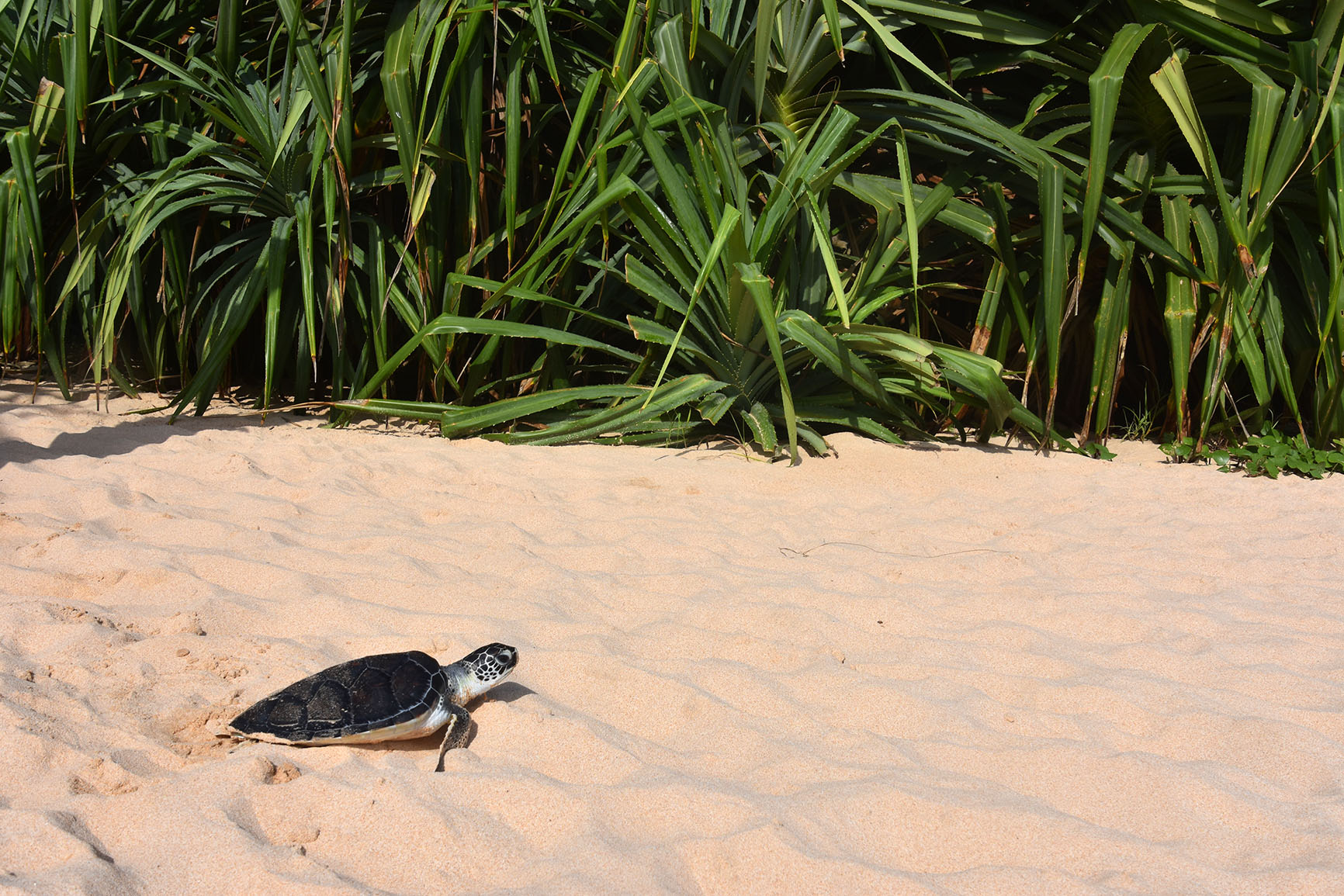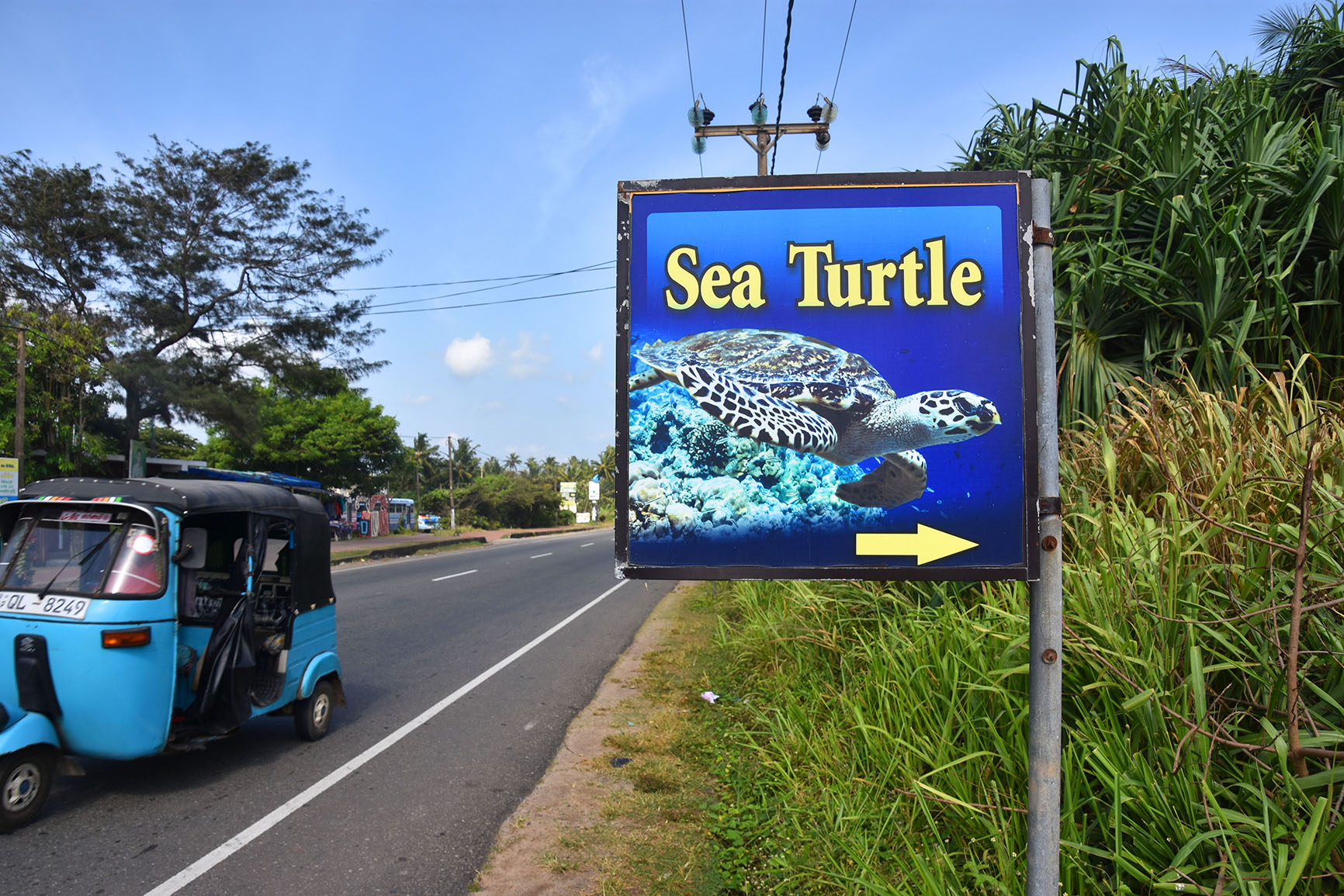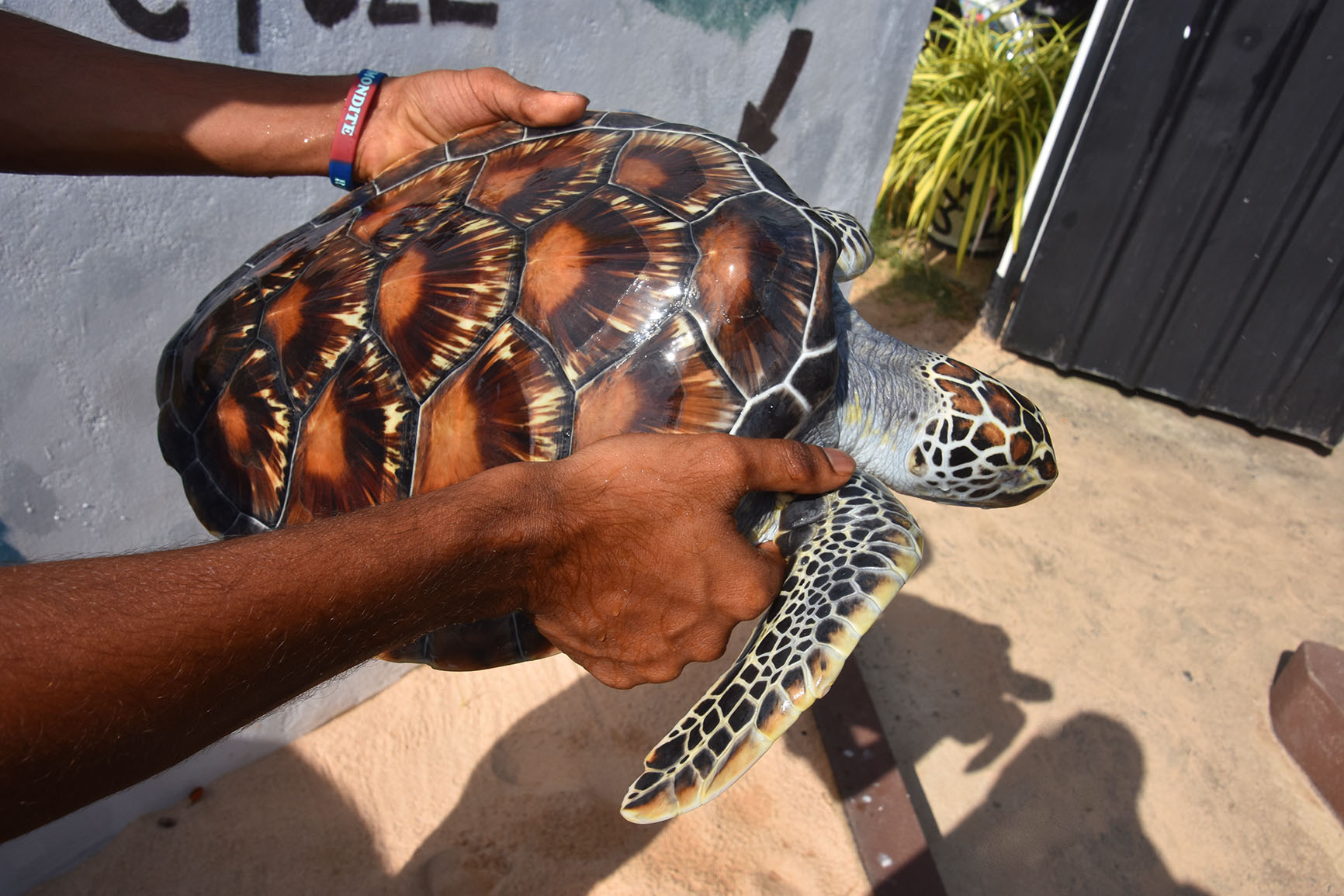Turtles – Sri Lanka
Amongst Sri Lanka’s many highlights, is the opportunity to learn, experience, and get involved in the protection of its indigenous turtle population.
The island, through a swath of projects focusing on research, education and community engagement is an example of positive sea and freshwater turtle conservation. Home to five species of sea turtles (Green, Olive Ridley, Hawsbill, Leatherback, Loggerhead), as well as three freshwater (Parker’s Black, Sri Lanka Black, Flatshell), and the terrestrial Star tortoise.
With such a diverse coastline the island’s sun-kissed beaches, lush jungle coastlines and secluded coves and bays are the perfect habitats for these ancient mariners to thrive.
Timing is paramount, and if you are lucky, you might see sea turtles nesting on the sandy shores, as they return under the cover of darkness, to the very beaches where they were born. Driven by an instinct to continue their circle of life. The peak period is when the moon casts its shiny glow upon the waves, thereby letting the female turtles dig their nests and lay their multitude of eggs before returning to the sea. Months later, the small hatchlings emerge from their sandy sanctuary, embarking on what is regularly a dangerous journey to the ocean’s edge.
From the sandy shores of Kosgoda to the secluded beaches of Tangalle, where turtles come to nest and hatch their precious offspring, there are opportunities to seek a deeper understanding of Sri Lanka’s turtle conservation efforts, with coastal hatcheries and conservation projects open to sharing their work.
I would suggest joining one of the local guided tours, which in turn highlights the hugely immersive journey into the world of turtle conservation.
Recommended locations include the Kosgoda Turtle Conservation Project, Habaraduwa, Mirissa, Polhena Beach, Rekawa BaechHikaduwa, Bentota and Pigeon Island National Park.









































Sri Lanka trip almost within view now – getting very excited for January! Thanks for the blog insights.